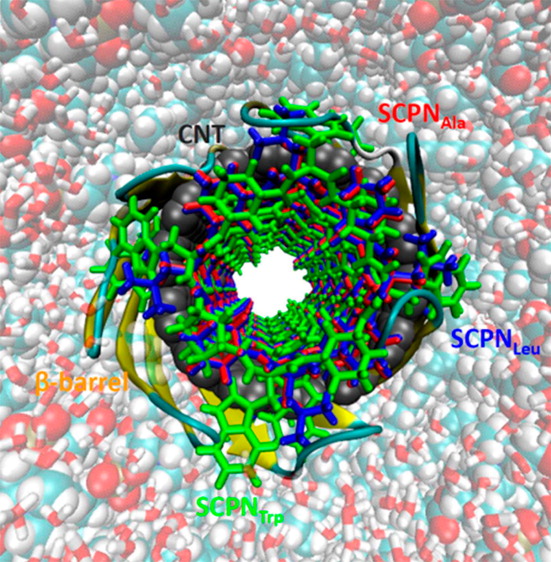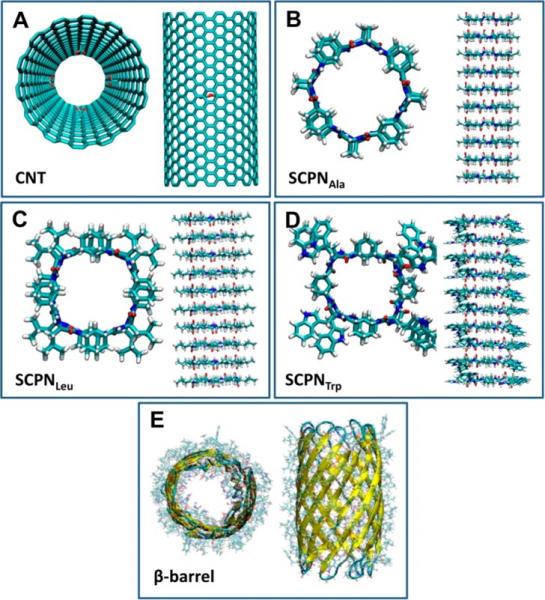Researchers from CiQUS and Oxford publish in ACS Nano the conclusions of a work that analyzes the behaviour of the cellular membrane in presence of embedded nanotubes, using different supercomputation techniques.
 Each of the cells of our body is protected by the cellular membrane surrounding their structure, keeping all their internal components isolated. These membranes also function as a sort of biological customs, regulating the exchange of substances between the inside and the outside of the cell through a series of integral proteins that act as pores and that enable and control transport of molecules across the membrane.
Each of the cells of our body is protected by the cellular membrane surrounding their structure, keeping all their internal components isolated. These membranes also function as a sort of biological customs, regulating the exchange of substances between the inside and the outside of the cell through a series of integral proteins that act as pores and that enable and control transport of molecules across the membrane.
The selectivity and efficiency of these biological nanopores has stimulated the design of simpler models that mimic natural systems while offering the possibility of developing novel functions and properties. In practice, the fundamental basis of many of these synthetic channels (which must necessarily have a high selective efficiency in the transport of ions and molecules) are nanotubes, but for the moment both their design and preparation are still a challenge because besides fulfilling the assigned function, those nanotubes cannot be harmful to the cells.
Progressing from knowledge
A future of nanoscopic tubular structures with multiple applications will only make real to the extent the various stages of knowledge have been successfully completed. It would not be feasible to imagine a scenario of these features without having previously obtained a detailed understanding of not only the effects that synthetic channels produce on lipid bilayers, but also of the influence that the insertion of the nanotubes can have on the dynamic characteristic of the cellular membrane. Both aprioristic studies are crucial to improve the design of biomimetic nanopores in order to ensure that they are stable and reduce the possible toxic effects.
The results of the work now published by CiQUS and Oxford researchers, based on computational molecular dynamics simulations and published in the prestigious journal ACS Nano, reveal that there are great differences among the adaptative mechanisms that active the cellular membrane when different types of macromolecular nanopores are embedded, a behaviour that reveals specially on the outer surface of the channels as well as on the lipids surrounding them.
The study, directed and developed by the CiQUS researcher Rebeca García Fandiño and Proffesor M.S.P. Sansom (Head of the Biochemistry Department of Oxford University - UK), with the participation of Prof. Ángel Piñeiro (Applied Physics Department-USC), provides conclusions of great importance for the design of new biomimetic channels, contributing significantly to its possible use as future drugs or biosensors.


